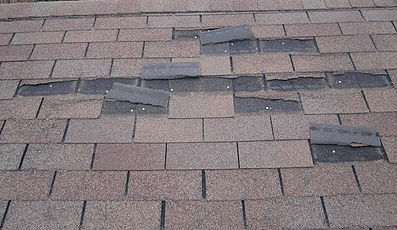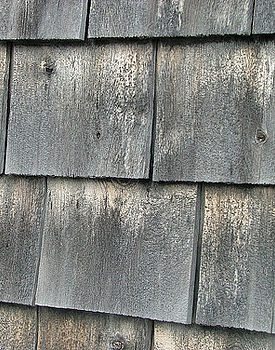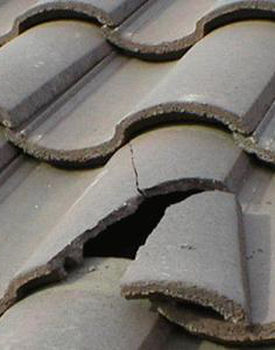Signs of Roof Trouble
The perfect combination of the best price and roofing experience will help you save time and money.

Check Roof Inside For
- Dark water stains in rafters and the insulation in attic
- Water stains on interior ceilings and walls
- Increased energy costs
- With wooden roofs, look for light passing through pinholes

Check Roof outside for
- Missing shingles, cracked tiles, warped or gapping shakes.
- Sagging roofline indicating a long time leak and structural problem.
- With asphalt roofs, check for thin, weatherworn shingles.
- With wood shakes and shingles check for warping, splitting or missing shingles torn off by high winds.
- Peeling, cracked, curling end of useful tile life
- Dark, dirty looking areas fungus, loss of granules
- Blistering or paint peeling ventilation has been lost
Environmental Roof Enemies
Many conditions affect how long your roof will last. Being familiar with your environment and the following factors will help you make informed decisions when purchasing your roof system:
Sun effects on roof:
Heat and ultraviolet rays can cause deterioration of roofing materials (faster on west or south facing sides).
Rain effects on roof:
Water can get underneath shingles, shakes or other roofing materials and work its way to the roof deck causing the roof structure to rot.
Wind effects on roof:
High winds can lift the edges of shingles (or other roofing materials) and force rain and debris underneath them.
Condensation effects on roof:
Condensation results from the buildup of warm, moisture-laden air and in a poorly ventilated attic can promote rotting of wood sheathing and rafters, possibly destroying a roof structure.
Trees and leave seffects on roof:
Branches that fall on your roof from overhanging trees can puncture shingles and may damage other roofing materials. Leaves accumulating on your roof can retain moisture, cause rot and block gutter drainage.
Shingle deterioration effects on roof:
When shingles become old and worn, they curl, split, are less waterproof and can be easily blown off by wind gusts. This results in loss of structural integrity from water damage and rotting. A roof system in this deteriorated condition should be replaced as soon as possible as it only gets worse with time.
Moss and algae effects on roof:
Moist wood shingles and shakes can be subject to rotting from moss growth. Moss roots can also work their way into wood decks or other wood structures. Algae growth on shaded or damp areas of wood or asphalt shingle roof systems causes rot and deterioration. Clay and concrete tile roofs near the ocean are also subject to algae problems. To help prevent moss and algae growth, trim trees and bushes away from homes to eliminate damp, shaded areas and keep gutters clean to ensure good drainage.
Flashing deterioration effects on roof:
Ensuring there are good, tight flashings around chimneys, vents, skylights and wall/roof junctions can prevent water from entering a home and causing damage to walls, ceilings, insulation and electrical systems. Flashings should be checked as part of a biannual roof inspection and gutter cleaning.


